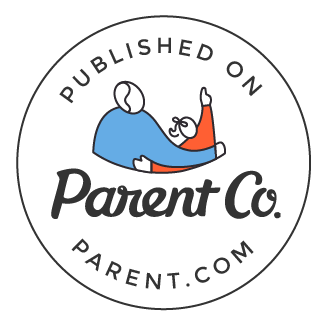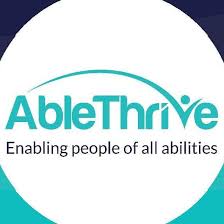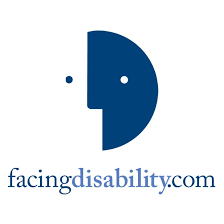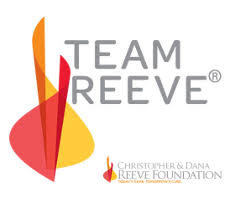|
(This blog tells my family's story. To see more, click "blog" at the top of this webpage.) Two and a half years after Beth’s spinal cord injury, I expected a gradual catharsis with my weekly counseling. But sessions still only stirred up tearful regrets for causing the accident. I thought that I must be doing something wrong, that I failed at therapy. After, I sat in the car, breathing deeply, until I carried no visible baggage home. I scheduled more appointments, hoping to find the person I had been before the accident. I was determined to redeem myself with Beth, though others needed me, too. And I needed them. I was intensely grateful for the people in my life. I wished gratitude could cure anxiety. Trying to look normal was a challenge on days when worst case scenarios dominated my thoughts. I had to concentrate to pay attention, even with my immediate family, though there was no lack of love or genuine interest. Unlike Beth, I had no grand goals. What I basically wanted — after magically erasing Beth’s injury — was the absence of pain. No headache that ebbed and flowed. No guilt and depression. No anxiety that also ebbed and flowed. Some days, Beth emanated vulnerability, a lifelong quad perpetually haunted by scary health risks: autonomic dysreflexia, serious infections, bladder stones, blood clots, and pressure sores. On other days, she looked to me like the happy and healthy teenager that she actually was. As a high school junior, Beth never saw the need to say no to extra activities. On top of AP classes and too much homework, she volunteered for fundraisers with the Raptors and for community events with the National Honor Society. She wrote for the school newspaper and worked on the yearbook. She followed her brother’s lead and earned a spot on the Quiz Bowl team. Her specialty: literature. A doctor also asked her to exchange emails with another teenager with a new spinal cord injury. Beth needed me less often, but I was there when she did. At the YMCA pool, on her forward motion quest, she progressed to spending more time with her head above water than under it. I read a book again while I sat on the bleachers, instead of watching every minute. One evening, she finished a backstroke lap as her high school’s swim team arrived to practice. As a few friends stopped to say hello to her, their head coach, Peggy Ewald, introduced herself to Beth... A fortunate accident. Serendipity.
6 Comments
 Beth as a toddler :-) Beth as a toddler :-) (This blog tells my family's story. To see more, click "blog" at the top of this webpage.) Beth’s first swimming summer ended with her first Sectional meet in August of 2002. When we drove through Indianapolis to Indiana University, we noticed the unusual billboard again, the same one we saw in Seattle. Quadriplegia at Harvard: A+. Sectionals was another packed to the hilt USA Swimming meet. “A swimmer who uses a wheelchair," Beth said, "is still an unusual sight at most swim meets." Able-bodied swimmers stood on the raised blocks to begin races for all the strokes except one: the back, which always started in the water. Most used their feet and legs to surge off the wall. Beth tried to gain a bit of momentum with her hands pushing off the wall. With rare exceptions, backstroke swimmers alternated their arms simply because it was faster. For Beth, the double-arm backstroke resulted in a better time, despite her head dipping under. She improved slightly on her swim times, but aimed higher. When her junior year of high school started, Beth scheduled a GTAC practice late afternoon every Friday. With the Toledo pool filled to capacity, she learned how to share a lane while a coach supervised her backstroke laps. At the end of every practice, she tried to get out of the pool by herself. Beth pressed her back into a corner of the pool and put her hands up on the ledge behind her, to try to lift herself up and out of the water. She rose just a few inches before falling forward, but she kept trying, regardless. Every practice. In addition to swimming on Fridays in Toledo, Beth asked to go to our Tiffin YMCA with me once or twice a week. I helped her into the water. Her practices without a coach focused on forward motion, the first step in her plans to master all of the swim strokes. I watched her closely from the deck bleachers, since she spent more time under water than above it. She somehow could get herself almost to the halfway point of the 25 yard length with a few short bursts to the surface for rapid breaths. Then she had to give her arms a break and roll onto her back to breathe more deeply. Even if by some miracle she could progress continuously on her stomach for the whole length of the pool, a bigger hurdle loomed: learning the mechanics of the butterfly, breaststroke, and freestyle, with legal modifications for legs that dragged behind and hands that could not cup the water. I worried. And worried. Would failing to achieve this goal tip Beth over the edge to depression? And without her buoyant optimism, how would I be able to move forward? Guilt and anxiety plagued my days and nights. What if overused antibiotics lost their effectiveness? That was how the quad in Green Springs had died of pneumonia in the hospital room next to Beth’s. Or would a blood clot travel to her heart or brain? I was sadly stuck in worst-case scenarios. Thankfully, Beth was not. “My next goal is to make the U.S. National Team that will attend the 2004 Paralympics in Athens, Greece.”  (This blog tells my family's story. To see more, click "blog" at the top of this webpage.) Beth had another sleepover on New Year’s Eve with her best friends and a fondue feast at our house. Soon after, Dr. Miller asked Beth if she would exchange emails with a new quad, and I talked to an overwhelmed mom on the phone. I listened but shared little, only how everything had changed in comparison to the initial month and how I hoped for more progress. I was sure that I wasn't a good role model for other parents. The New Year and the time beyond seemed impossibly uncertain. My concerns encompassed the global and the trivial. I was an equal opportunity worrier. Since 9/11, terrorism and nuclear weapons found their way into my nightmares. Any number of potential health problems threatened Beth—and everyone I loved. When she ventured out into the world as an adult, what kind of welcome would she find as a quad? As a toddler, she was Cinderella to Maria's Snow White. Would they find their happily ever afters? At a meeting in Toledo, Beth registered for the wheelchair games in May with the Raptors. She thought that she wasn’t good enough to sign up for the pool events, but others convinced her to try. Some of her friends also shared their earlier trips to another sports event, the National Junior Disability Championships, held every summer for kids from across the country. In February, Beth elected to have an eight-hour bladder surgery, paving the way for independence. As a result, I would no longer need to be with her every few hours. A week after she left the hospital, against my advice, she agreed to help Laraine with a new class of physical therapy students. Beth wore loose clothes to cover the temporary tubes from the surgery that protruded from her abdomen along with a small rubber bulb. Laraine teased about going easy on her during the mat exercises. When Beth sat with her hands in her lap, she wobbled less than she had at the last demonstration. Careful with the tubes, Laraine refrained from pushing hard to test her balance. Beth also shared her ponytail progress with the students, but she still couldn't complete an additional loop of the elastic to keep it in place. Not yet. At the followup appointment with the urologist, he removed all the tubes and the bulb for good, leaving bare skin and a long surgery scar below her belly button. We celebrated with a shopping trip. She had fun picking out cute underwear and a bikini swimsuit. Beth was disappointed with the doctor’s ban on swimming for six more weeks as she healed from the major surgery, not negotiable. And her first swim meet ever was just ahead.  (This blog tells my family's story. To see more, click "blog" at the top of this webpage.) When snow started to fall in Ohio, I pulled my sewing bag out of the closet. I made my favorite peace doves out of felt with embroidered accents and lacy wings for Laraine, Jill, and the other therapists at Green Springs, part of our extended family. I loved how they loved Beth. I mailed Christmas cards decorated with doves, wishing for peace. For the world, for our country, and for me. John drove with Beth, Maria, and me to Toledo for the holiday party of the spinal cord injury group. Talking to other parents, I could answer the sad question of who was to blame for the car accident that injured Beth, and without crying. Progress of sorts after a year and a half. Though my guilt was still alive and well, and I quickly steered conversations away from the accident. I talked to other quads, some with serious health issues that increased my sense of foreboding. I wanted to be positive and optimistic, but I couldn’t find the way. John was in his element. He started conversations and listened to the journeys that others had traveled—and shared our family’s story. We teased him that everyone in Ohio knew about Beth’s injury. John often said that everyone has a story. Maria and Beth sat at the cool kids table with the teenagers while the younger children watched them. I heard part of a conversation about the first Harry Potter movie, The Philosopher’s Stone, in theaters since before Thanksgiving. Most of the teenagers had seen it more than once, including my girls. After our goodbyes at the party, I was relieved when Beth dosed off in the car, avoiding her anxiety about driving in the dark. Her worries were specific and situational, such as tornado warnings and the low gas indicator in the car. Maria already had a driver’s license, so one clear Saturday afternoon, my girls went shopping at the Findlay mall. On the way home, Beth noticed the low gas indicator turn on as they entered a fifteen-minute stretch with no gas stations. She wanted to turn around and go back to the closest station. Maria tried to reason with her, unsuccessfully, and they both arrived home frustrated. Thankfully, the conflict was soon forgotten. It was beginning to look a lot like Christmas—as it had been before the accident. It was easier to hold brief conversations with other parents after the holiday choir concert, always a lovely highlight of the season for me. When my kids were little, we read about Christmas traditions and their origins. Favorite songs, decorating the house and tree, making special food and cookies, playing card games, watching movies with popcorn, wrapping gifts, and making new memories to add to many lovely ones at my family's farmhouse. Sitting around the big dining room table at the farmhouse, I missed my grandma and grandpa, reminded how life can change in a moment. All the more reason to hug loved ones close. Merry Christmas and Happy Holidays to you and yours!  (This blog tells my family's story. To see more, click "blog" at the top of this webpage.) Beth’s second year of high school would hold different challenges than the first. When she started her sophomore year, sixteen months after her injury, I could get through the days without crying in front of anyone, a victory of sorts. “My small group of really close friends in high school helped me in many ways,” Beth said, “including breaking my leg spasms and carrying my book bag. By the second year I had those things under control, but a friend continued to sit by me in class only because it was more fun that way.” I took a short cut through the school cafeteria on September 11th at lunchtime and paused by a strange crowd of silent students in front of the television screen. It took only a moment to get my first glimpse of unthinkable tragedy. I rushed to the locker room, relieved to find Beth and Maria waiting for me. Hugged close and safe, for the moment. I grieved with the nation, overwhelmed by the scale of the losses and the faces of children who would never grow up. My worst-case scenarios amplified after 9/11. Terrorism took on a life of its own in my mind, growing and mutating into an on-going and imminent threat. I tried to tap down the fear by storing bottled water in the basement and packing an emergency duffle bag. I wrote phone numbers and a meeting place on a small rectangle of paper, copied and laminated for each member of my immediate family to carry in their wallet. An article that I read caused me more worry, about the terrible knowledge that nuclear weapons had already been used in the past, and might be used again. My heightened fears grouped nuclear weapons with terrorism and a deadly virus. Toxic chemical spills were a high risk in Ohio with the heavy truck traffic. And a personal, selfish anxiety about any number of alarming events that could restrict prescription drugs; I was acutely aware of my addictions with antidepressants and pain medicine (not opiods, thankfully). Who would I be without the prescriptions? How would I help Beth? The very worst part of my anxiety was feeling helpless—powerless, useless—to protect my family. My counseling sessions after 9/11 were more emotional. My psychologist patiently explained to me that widespread catastrophe would be highly unlikely, as though that would comfort me. The tragedy of 9/11 had been unlikely. Our car accident and Beth's injury had been unlikely, too. I really (really) wanted to be optimistic, and picked up books at the library with positive messages. I wished that getting rid of anxiety could be as simple as just choosing not to worry. Just choosing to have hope. When Beth asked to go to the YMCA a few times a month, I read books on the pool deck while she moved on her back with her arms waving slowly underwater. I no longer needed to watch continually for her head dipping too long under the water. When I drove to Green Springs after school for physical therapy, Laraine encouraged her to keep swimming. Though technically, she was floating. I joined Beth in the water one Sunday at her request. She wanted to try the backstroke. The effort to rotate her arms out of the water caused her to sink. I splashed my face to hide my tears as I lifted her up. We had no way of knowing that the backstroke would be her fastest swim stroke. 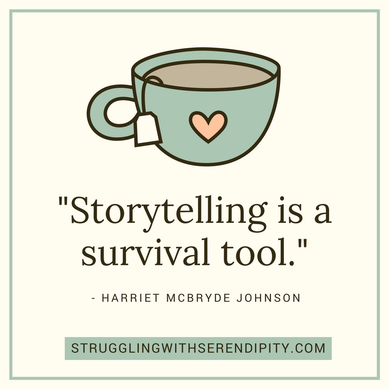 (This blog tells my family's story. To see more, click "blog" at the top of this webpage.) During Beth’s first summer vacation at home with a spinal cord injury, she focused on time with friends. We rode with another mom in her van full of excited teenagers to an N’Sync concert in Michigan, with the words “PopOdyssey N’Sync” in bright paint on the back window. Near Detroit, a traffic jam on I-75 turned into a party. Girls blared music, waved signs, and shouted to each other across the highway lanes. That might have been fun except for temperatures in the 90’s with high humidity. The van had no air conditioning and there was no breeze as we inched along. Beth flushed with fever, her body unable to sweat to cool down. I carried Tylenol, but nothing to drink it down with since we didn’t anticipate the traffic jam. I encouraged her to take it without water, but she wanted to wait. Approaching the stadium, I frantically waved the handicapped-parking placard out the window at the traffic cop to avoid another jam of cars. Finally parked, I hurried Beth out of the van to the first drink stand for cold bottled water. She took the Tylenol and drank extra water before we found our seats. In shade, Beth felt better before long and danced with her friends. They watched Justin Timberlake, the 20-year-old who stole the show in the pulsing lights on the stage. Our summer comings and goings confused Beth’s high-strung African Gray parrot. He plucked out feathers and injured his skin. A vet put a plastic cone around his neck, making him more miserable. We wondered if Timber had been taken from his parents too soon, and a friend recommended a bird sanctuary in Cleveland. Whether it was my fault or not, the parrot toddler needed more help than we could give. I drove him to the sanctuary, which included an extensive outdoor aviary with dozens of birds. Beth and I cried when we said goodbye to Timber, but we were glad to hear that he recovered quickly, delighted in his new home. Early on an August Saturday, firemen lifted Beth in her wheelchair onto a boat at a Sandusky pier on the Lake Erie shore. I skipped the fishing part of the Fishing Without Boundaries event. When the boats returned, I heard about how Beth caught more perch and walleye than her dad. The boat’s young first mate watched three fishing poles and handed one to her whenever he had a nibble. She reeled in about two dozen fish and let someone else take the fish off the hook. A friendly crowd gathered for a picnic near the docks. A mom told me how children at school made fun of her daughter, who grew up feeling like a victim. A dad shared his ongoing battle with pressure sores, reminding me of an article I read about a woman who had both legs and part of her trunk amputated because of pressure sore infections. Surrounded by the perspective of significant disability, I understood the mental argument that I should be happy and grateful. I was grateful. I could get through most days without crying, and yet... ...part of me sludged through guilt that felt like grief. ...through depression and anxiety that made me afraid of the future. Catastrophes seemed to be waiting in the wings, for Beth, for me, for the rest of our family, for our friends, and for the world. I listened to Beth laugh with the other teenagers and wondered if she could avoid depression entirely.  (This blog tells my family's story. To see more, click "blog" at the top of this webpage.) The high school’s Individual Education Plan for Beth focused on access: special desks, leaving class early, the private locker room, and getting down the steps during fire drills. At an IEP meeting, the principal asked her what she needed. She surprised me by requesting a place for her wheelchair in the student section of the stadium for home football games. She also mentioned the problem of others being too helpful. When someone grabbed a push handle on the back of her wheelchair, she reached around and lightly smacked their hand with her fist. “I realized that my biggest challenge would be to insist on doing things myself and to become independent again,” Beth said. “At the risk of sounding corny, people are generally kind, so it was my responsibility to speak up for myself.” The first anniversary of the accident came and went without discussion. It didn’t seem to phase Beth, other than an appreciation of how far she had come since then. At counseling, I rehashed the night of her injury. My guilt and anxiety were far from rational and out of my control. Certain that I had ruined Beth’s life, I needed a way to erase the injury and her losses. I wanted nothing less than the world at her fingertips, with hands and legs she could feel and move. With a cut spinal cord, the only chance of recovery would be medical miracles of the future, but I still couldn’t accept her injury—or my role in causing it. The annual regional choir contest had been at Tiffin Columbian on the day Beth was injured on May 20. Early that morning, I had set up the concession stand in the cafeteria. After my girls sang, we left for Columbus. A year later, the choir contest would be out of town. The director, Curtis King, complained when a handicapped-accessible school bus would not be available, but Beth didn’t mind driving with me. I brought a book along and opened it to discourage other parents from talking to me. I also perfected the art of hovering at a distance to be available to Beth, but out of the way. She sang with her 9th grade choir and Maria had a solo in the Women’s Chorus, all earning high marks, as usual. Without being asked, Mr. King and his father had built a portable ramp for the risers so Beth wouldn’t be the only choir member on the stage floor. His unexpected kindness would be repeated by many in other times and places.  (This blog tells my family's story. To see more, click "blog" at the top of this webpage.) The pneumonia winter gave way to spring before Beth felt well enough to request swimming at the YMCA. She attempted to put on a bathing suit by herself at home, much harder than other clothing, but accepted my help to finish. At the pool, I stayed with her in the water, watching as she floated on her back and waved her arms gently underwater. She stayed in the pool about twenty minutes with frequent breaks at the walls. I lifted her out of the water carefully to avoid scraping her back. Even so, the concrete walls left her lower extremities with abrasions that healed slowly. She wouldn’t consider any kind of protective coverings for her legs or feet, except for a few waterproof bandaids on the worst of the scrapes. Against my advice, Beth sang at tryouts for the high school musical Guys and Dolls. With the pneumonia week in the hospital fresh on my mind, I stressed about her taking on too much. With two of her best friends, Ellen and Jackie, she bypassed the stage steps and took the long way through the choir room to the stage. I drove Beth and Maria to and from rehearsals and we shopped for costumes at Goodwill. When a tornado watch started with a rehearsal underway, I returned to school early to pick them up and hurry to our basement. Ohio’s tornado season escalated in significance for my family. Previously, John would monitor the weather during watches and we very rarely camped out in our partially finished basement. No more. Beth felt compelled to heed every warning and watch at once, so we carried her down the steep basement steps. She couldn’t relax until everyone stayed in the basement, including Timber. The growing parrot sat heavily on her shoulder and played with her hair while she completed homework. When Timber hopped onto the papers in her lap, she prompted with his first words, up up, for him to jump on her hand. One stormy midnight, Beth insisted on a family trek to the basement during a long tornado warning, not a watch. Losing sleep, she admitted her anxiety, similar to her response to the low gasoline light in the car. I offered to find a good counselor for her, but she emphatically declined. A weekday afternoon when Beth stayed home with John, I sat in the bleachers at the softball field and watched Maria play on the high school team. A hard hit ball connected with the head of a girl from the other school. An ambulance drove right onto the outfield with lights blazing and sirens wailing. Maria didn’t hit the ball that hurt the girl, but the ambulance brought back unwelcome memories for both of us. We hugged behind the bleachers in tears. The year anniversary of Beth’s injury approached.  (This blog tells my family's story. To see more, click "blog" at the top of this webpage.) I convinced Beth to take a day off of school to go to the Shriners Hospital. Two volunteer drivers met us in Toledo early in the morning. We left our car there and boarded their van for the four-hour drive to Chicago. The friendly drivers lived in our hometown, Tiffin, and one was the grandfather of a friend. The Shriners Hospital made a colorful first impression, effectively designed to be welcoming for families. Beth and I met individually with each member of a large team at the spinal cord injury clinic, including a urologist, orthopedic surgeon, social worker, occupational therapist, psychologist, and physical therapist. A bubbly nurse took us on a tour of the hospital, pointing out a display for the Make-A-Wish Foundation for children with life-threatening medical conditions. She casually offered to make a referral for Beth, and introduced us to another quad and her mom who recently returned from a cruise in Alaska through Make-A-Wish. My family had rarely traveled. However, the offer bothered Beth. Between appointments, we talked. Make-A-Wish clashed with her wholehearted belief that her “condition” would get better, not worse, based on the one scale that mattered to her—decreasing dependence. She knew that cut spinal cords did not get better, and the medical miracle of re-growing cut cords might not happen in her lifetime. The frightening severity of her recent pneumonia and other risks of quadriplegia did not factor into her decision. Beth turned down the nurse’s offer, certain that others needed Make-A-Wish more than she did. I trusted my daughter’s judgment over my own. The entire team at the Shriners clinic convened with us at the end of the day to make recommendations. We learned that Beth’s damaged back muscles changed the spinal column and worsened curvatures. She acquired two new diagnoses. I had never heard of kyphosis, an outward bowing of the back, but I understood scoliosis, a curvature sometimes resembling the letter S. When I was a teenager, way back when, I had worn the Milwaukee back brace, an antiquated treatment for scoliosis. The brace covered my pelvis, with a metal bar that curved out in the front and connected to a chinrest, making three years of junior high and high school more awkward for me than usual. If the curving and bowing of Beth’s back continued to worsen, her organs could be damaged and major surgery would be needed to straighten the spine with a metal rod. I added back surgery to my ocean of anxiety. I worried for Beth, for the rest of our family, for friends, and for the whole world. The relentless ache in my head dug in deeper, filling the space behind my eyes. I talked to my psychologist every week about pain, guilt, and depression. She told me that guilt could resemble grief and offered rare advice: find things to look forward to. In other words, stop waiting for the next tragedy or health crisis. Easier said than done.  (This blog tells my family's story. To see more, click "blog" at the top of this webpage.) After two lost weeks, one in intensive care and one at home, I carried a nebulizer to the high school at lunchtime for Beth’s breathing treatment. Pneumonia had set back her stamina by months. A shortened day of school wiped her out, again. On edge and anticipating the next crisis, I felt an initial flash of fear when the phone rang, and relief when it wasn’t an emergency. For the first time in my life, I understood the compulsion to try to feel better through food. That didn’t work, but not for lack of trying. I joined the ranks of emotional eaters and had to buy bigger clothes. The completed elevator at school led to second floor classes for Beth, which created the need to carry her down the stairs during fire drills. I wrote a detailed procedure and helped a therapist from Green Springs lead the staff training. Several teachers volunteered to attend. The principal had bought a heavy vinyl sheet with four handles, two on each long side, like firemen used. Four teachers carried her on the sheet while a fifth moved her empty wheelchair. Concerned about hitting her head on a step, they lifted the sheet higher with extreme caution. “It took awhile for them to realize I don’t break,” Beth said. She also had a new favorite saying: “I’m not broken and I don’t need to be fixed.” During one drill, her Spanish teacher wore a football helmet to make her laugh. She put up with the drills, but disliked being carried outside on the vinyl sheet into a crowd of students. As more time passed, during a pre-planned drill, Beth talked them into breaking the rules with an unplanned stop inside the building at the bottom of the stairs, to lift her into the wheelchair. From there, she pushed herself outside. Riding the elevator every school day with a friend turned into entertainment. Sometimes they added their own elevator music. They flirted with boys on crutches, injured athletes who also used the elevator. When she accidentally bumped the alarm button and nothing happened, hitting the alarm on purpose became a joke. Beth loved to laugh and found humor in her situation that her close friends and family shared. Being a quad (quadriplegic) meant that you could not flip someone off with a middle finger, so raising a fist instead became a inside joke—though I knew that when she could do it the usual way, she wouldn't. At school, a friend scolded her for not standing up during the Pledge of Allegiance. They made summer plans to go to Cedar Point, famous for its roller coasters, to be first in line because of her wheelchair. At friends' houses or at ours, Beth liked to sit on the couch; when she was asked to get something in another room, she quipped about being tired from too much walking. “Everyone I know with an injury who is doing well has a sense of humor about it,” Beth said. “You need that.” |
Cindy KolbeSign up for my Just Keep Swimming Newsletter by typing your email address in the box. Thanks!Categories
All
Archives
November 2022
|


 RSS Feed
RSS Feed


